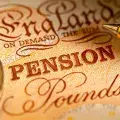For some, pensions may seem ‘too complicated’, which can inevitably put them off saving for their retirement and, in turn, they seek to invest in other assets or even build up a cash pot for the future.
However, the process does not need to be difficult or archaic as the concept is relatively simple – you put money into a savings pot for the future to be invested appropriately over the longer term, albeit this pot is governed by certain rules and regulations. In preparation for retirement the key is to put away a certain proportion of your salary each year over a long period of time to build up a substantial pot.
So how much can you put into a pension?
In short, there are no limits on the amount you can contribute to a pension each year. You can contribute as much as you like to top up your pension, be this by monthly contributions or as a one-off lump sum payment prior to 5 April each tax year. As always, though, there is a ‘however’!
While there is no upper limit to the amount of pension contributions you can make, there is a maximum amount on which tax relief can be obtained and before tax charges may be levied. In addition, there may be provider restrictions and for contributions deducted from salary, certain employment law restrictions may apply. From a tax relievable perspective, when it comes to personal pension contributions, you can receive relief on the greater of £3,600 (gross) or 100% of your relevant UK earnings in each tax year.
However, total pension contributions are also restricted to the annual allowance. The current standard annual allowance for pension contribution purposes is £40,000 and is essentially a restriction on the total amount of pension contributions that can be paid into a UK registered scheme within a tax year.
It is important to mention that any amounts paid into a pension scheme over and above the available annual allowance will effectively be added to your overall taxable income for the year and taxed at your marginal rate, making it not as advantageous to make personal contributions over the available annual allowance from a tax perspective.
There is however a way to contribute more than £40,000 in any one tax year without being penalised, and this is known as ‘carry forward’. The carry forward allowance effectively ensures that an individual can make more than £40,000 of pension contributions in any one tax year providing they were a member of a UK registered pension scheme in the relevant years preceding the tax year in which they make the pension contributions. This therefore enables the individual to utilise unused allowances from the three previous tax years to carry forward into the current year to make a pension contribution above £40,000.
So what is threshold income?
If an individual has a ‘threshold income’ of £200,000 or less they will not be subject to the tapered annual allowance. Threshold income is essentially taxable income and includes elements such as:
• earned salary
• employment bonuses
• benefits in kind
• any salary sacrifice arrangements made on or after 9 July 2015
• income from rental properties
• trading profits
• dividend income
• onshore and offshore bond gains
• interest on savings held in saving accounts with banks and building societies
When calculating threshold income certain deductions will need to be taken into account such as pension contributions made via relief at source (RAS), any lump sum death benefits received in the tax year that were subject to tax at marginal rate and certain allowances and reliefs, i.e. excess tax relief under net pay pension schemes.
However, if the threshold income exceeds £200,000, there will then be a requirement to calculate the adjusted income to work out the amount of tapered annual allowance available.
What is adjusted income?
As with threshold income the same rules apply in determining an individual’s taxable income, but employee contributions whether by RAS or net pay are included as well as employer contributions. As mentioned above, once an individual’s adjusted income exceeds £240,000 per annum then their contribution capacity will start to reduce, unless the threshold income is below £200,000.
Below is an example to demonstrate how it all works.
Tara earns an annual salary, bonus and dividends of £205,000 per annum meaning she has exceeded the threshold limit. However, her employer makes a £100,000 pension contribution (using the available carry forward allowances of £60,000 from the three previous tax years plus £40,000 for the current tax year). As mentioned above, Tara’s employer contribution will need to be included in the calculation for adjusted income purposes. Therefore, Tara now has an adjusted income of £305,000 and her annual allowance for this tax year is reduced to £7,500, which means that an annual allowance charge will apply on £32,500.
However, if Tara makes a personal contribution of £5,000 this will then bring her under the threshold limit and tapering would not apply. It is important to note that Tara would have still paid £5,000 over the available annual allowance that we identified above as a total of £100,000 (including carry forward allowances); however, the annual allowances charges would have reduced. Tara will need to calculate whether this method works for her when comparing the cost of the annual allowance tax under the first option versus the cost of reduced tax but including the extra contribution into the pension.
Building for the future
Saving for your retirement over a longer period of time will inevitably put you under less financial strain later on in life when building up a ‘nest egg’. The advantage of making pension contributions is that tax relief is awarded at your highest marginal rate up to the allowances as described above. Alternatively, pension contributions made from a business will be eligible for corporation tax relief, subject to the wholly and exclusive rules, and specific tax advice will need to be obtained. While the concept of making pension contributions into a UK registered scheme is relatively straightforward, it does however require good financial planning for individuals once their earnings (from all sources) exceed £240,000.
*Please note the above pension contribution allowances are based on the 2020/21 tax year rules and can change in future years.
This article has been produced for information purposes only. It is not intended to be an invitation to buy or act upon the comments made. All investment decisions should be taken with advice, given appropriate knowledge of the investor’s circumstances and one must satisfy certain investor criteria before being considered eligible to invest. Any forward-looking statements and forecasted returns represent the current views of Mattioli Woods plc and may be subject to change. Your capital may be at risk and past performance is not a guide to future returns. Mattioli Woods plc is authorised and regulated by the Financial Conduct Authority.

































































































































































































